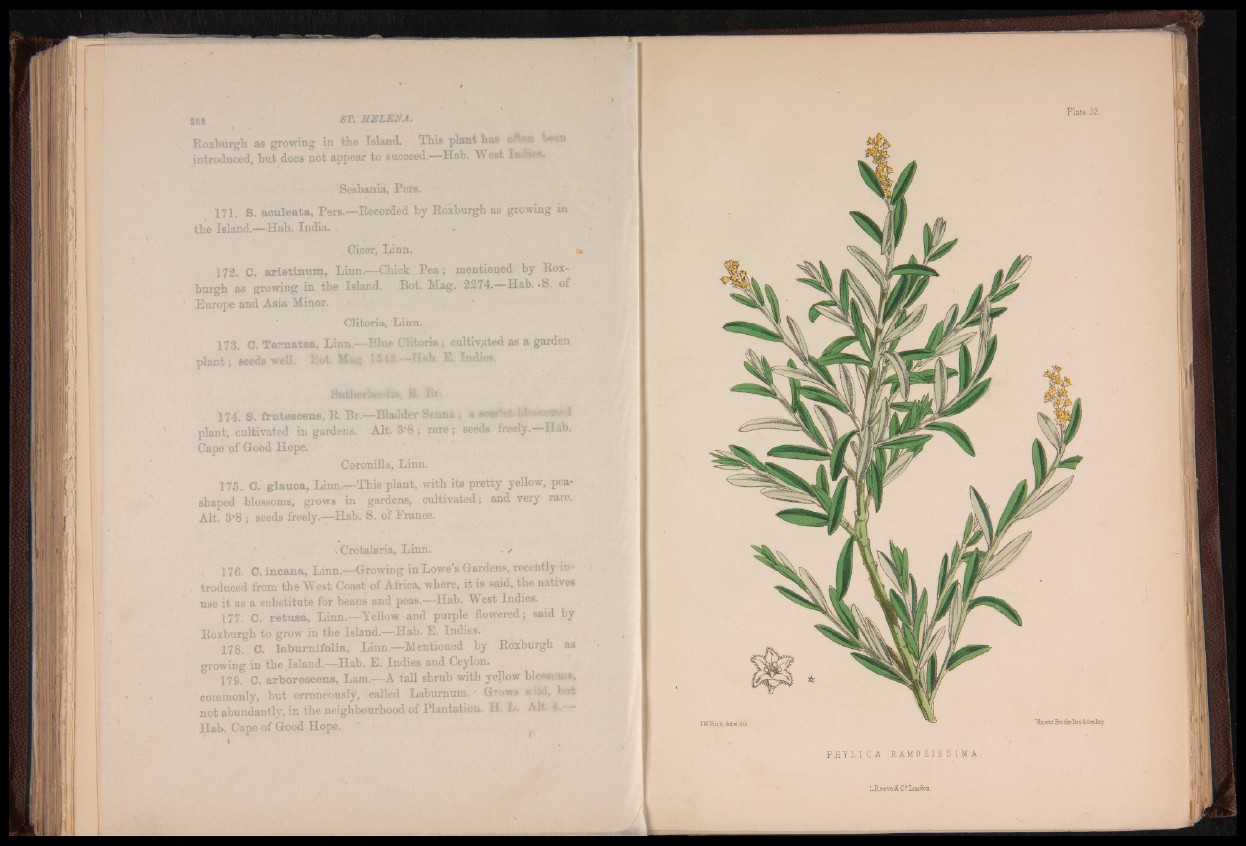
258 ■ » '■ 'J. : : v ’• ’ ^ ST. S E LNE N A .i ‘ v
Roxburgh a» growing in the Island. This plant has sH*» Wn
introduced, but does not appear to succeed.—Hab. West JwSi**.
Sesbania, Pers.
171. S. aeuleata, Pers.—Recorded by Roxburgh as growing in
the Island.—Hab. India.
Cicer, Linn. . ’•'&>
172. C. arietinum, Linn.—-Chick Pea; mentioned by Roxburgh
as growing in the Island. Bot. Mag. 2274. Hab. - S. of
Europe and Asia Minor. 1
Clitoria, Linn.
173. C. Tematea, Linn.—Blue Clitoria; cultivated as a garden
plant; seeds well. Bot 1542 Tiab. Xv Todies
. S&thSiT'iiw.'iiiiffiv Hi*
, 174'. s . fbutescens, E. Br.—Bladder Senna; a
plant, cultivated in gardens. Alt. 3 8 ; rare; seeds freely.—Hab.
Cape of Good Hope.
Coronilla, Linn.
175.. C. glauea, Linn.—This plant, with its pretty yellow, peashaped
blossoms, grows in gardens, cultivated; and very rare.
Alt. 3'8 j seeds freely.—Hab. S. of France.
' Crotalaria, Linn. . /
176. C. incana, Linn.—Growing in Lowe’s Gardens, recently in-
, troduced from the West Coast of Africa, where, it is said, the natives
use it as a substitute for beans and peas.—Hab. West Indies.
177. C. retusa, Linn.-—Yellowand purple flowered; said by
Roxburgh to grow in the-Island.—Hab. E. Indies.
178. C. laburnifolia, Linn.—Mentioned by Roxburgh as
growing in the Island.—Hab. E. Indies and Ceylon.
179. C. arborescens, Lam.—A tall shrub with yellow blossoms,
commonly, but erroneously, nailed Laburnum.' Grow* wild, hot
not abundantly, in the neighbourhood of Plantation. M L. Alt I.
Hab. Cape of Good1 Hope.
PHYLI CA RAMD SI S S IMA.
IN . Fitch, oeL e t lith